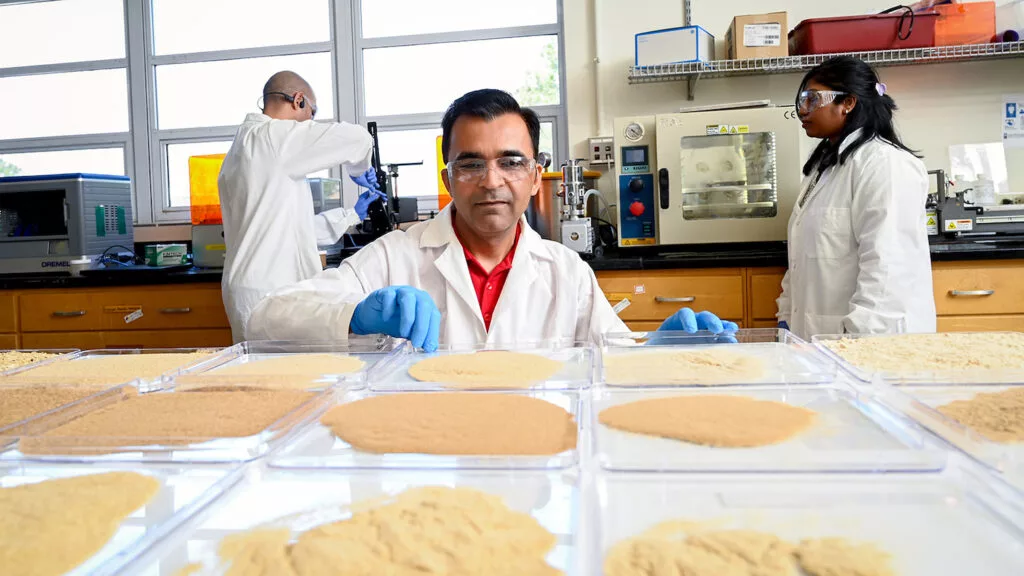While all non-recyclable plastics aren't very eco-friendly, expanded polystyrene (EPS) foam is particularly problematic, as it's bulky and frequently used in disposable packaging. It could one day be replaced by a new biodegradable material, however, made from sawdust.
The biomaterial is currently being developed at North Carolina State University, by a team led by professors Lokendra Pal and Lucian Lucia. Its chief ingredient is sawdust waste, which could be sourced from sawmills or other facilities. Although there are some other uses for sawdust, it's typically just burned or dumped in a landfill.
Once the sawdust is obtained and sieved, it's ground up in combination with agricultural waste products. The scientists are currently using hemp hurds, although we've been told that they will also be looking into other types of agri-waste, such as sugarcane- and banana-processing residue.
Whatever the case, the result is a powder, which is mixed with a binder made of plant-derived cellulose. That mixture can then be pressed in a mold at high temperatures – or dissolved in a non-toxic solvent and then cast at room temperature – after which it's dried at low temperatures. No water is used at any step in the process.

Not only can the resulting objects be recycled, but they will also completely biodegrade in salt water.
Pal and Lucia now plan on conducting pilot and commercial trials over the next six months, aimed mainly at exploring the material's use in packaging and food service products. They will also be performing more research on the material's biocompatibility, biodegradability, and its ability to be 3D-printed.
Source: North Carolina State University






